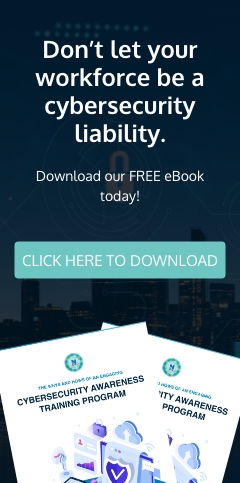When stay-at-home orders were implemented in Maryland and across the United States, many people were forced to work from home. This meant employees were accessing corporate data and applications via home internet connections. Unfortunately, home networks are not as secure as corporate ones, so using them could compromise the security of your sensitive data.
Cybercriminals are aware of this, so they are launching more attacks targeted at remote workers. Back in April 2020, the US Cybersecurity and Infrastructure Security Agency recorded a rise in phishing scams that take advantage of the public’s concern regarding the COVID-19 pandemic. And more recently, brute force attacks on remote desktop protocols grew to 377.5 million globally from 93.1 million a year ago.
These incidents show that data protection is more important than ever. So what can you do to keep your data safe? Here are a few tips:
1. Update your data access policies
Your employees need to understand your security protocols when accessing corporate data and applications, that's why your data access policies must::
- Specify new authorization and authentication protocols that must be implemented for remote access to your organization’s data and applications.
- Discuss what security risks employees may face and provide guidelines like creating secure passwords or locking computers if they step away from their workstation.
- Determine if employees need a virtual private network or another remote access solution.
2. Regularly update your software
Software companies regularly issue new security patches and updates to fix vulnerabilities in operating systems, applications, and security software. If you delay installing these, your company can significantly become more vulnerable to data breaches.
Case in point: Back in 2017, credit reporting company Equifax suffered a data breach that compromised the personal data of 143 million people. Cybercriminals infiltrated their system through a web-application vulnerability that had a patch available two months before the attack. If only Equifax installed the patch, it could have mitigated the breach.
To prevent data breaches caused by software vulnerabilities, install updates as soon as they are available. Keep a record of all company software, including their current version, when they were last updated, and if they still regularly receive updates. Doing so will help you determine if your applications are due for an update. You can also try a patch management solution that tracks new security patches and automatically distributes them to company devices.
3. Enable multifactor authentication (MFA)
MFA is a security solution that verifies the identity of users through two or more authentication methods when they log in to their account. These could be an app authentication code, login prompt, physical security key, or a fingerprint or facial scan.
MFA can significantly reduce the risk of data loss because even if an attacker gets a hold of a user’s login credentials, they would still need another proof of identity to access the account
4. Invest in cybersecurity awareness training
Cybercriminals commonly steal data using phishing scams wherein they send fraudulent emails that claim to be from a legitimate entity like PayPal or Google. Hackers may also install keyloggers that record every keystroke made by an unsuspecting user. Others may distribute malware disguised as seemingly innocent software on established app stores.
It’s therefore crucial to teach your team good security habits through a comprehensive cybersecurity awareness training. Here are some best practices you can teach them:
- Be careful when opening unsolicited emails, and refrain from clicking links and downloading their attachments. These emails usually contain malware or phishing links that may compromise your data’s security.
- Don’t connect to public Wi-Fi hotspots. Because anyone can connect to the network, cybercriminals can launch man-in-the-middle (MITM) attacks to intercept traffic, eavesdrop on online activities, and steal data.
- Enable firewall protection. A firewall is your first line of defense in protecting your business against data loss as it prevents unauthorized users from accessing your websites, email, and other sources of information.
Conduct cybersecurity awareness training every four to six months and make sure that the sessions are engaging. When people can relate with your training modules, they will pay attention and your messages will resonate better.
5. Use access control solutions
Another effective way to protect your data is implementing an access control policy such as role-based access control (RBAC). RBAC allows IT administrators to give users certain privileges on resource groups, subscriptions, and other corporate data. It helps segregate duties within a team, so only the authorized people can access certain information.
Looking for better ways to protect your data during the work from home era? Partner with NetQuest! Our Computer Data Security solutions will detect online threats, fortify your IT infrastructure, and provide you with secure login options. If your business is within the greater Baltimore, Annapolis, and Towson areas, we can help you. Contact us today.


